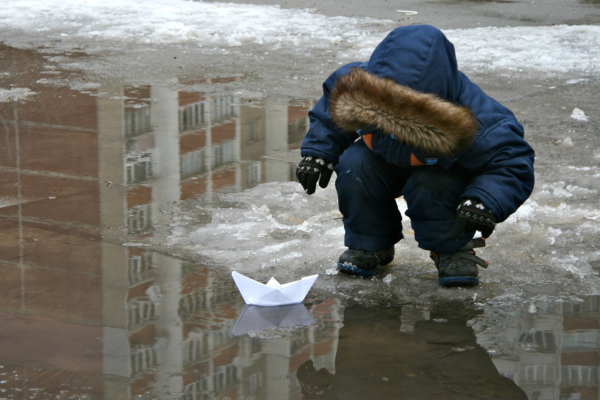
Why Submitting to Contests is a Win-Win
Should you enter a writing contest or not? If your writing rises to the top, you just might win a prize upwards of thousands of dollars if you’re lucky.

My four-year-old grandson loves for me to tell him a story as he is trying to fall asleep at night. His bedroom is dark and he knows he has to first provide me with the main character (often a dragon, an invisible dog, a talking carrot) before I fashion a story for him.
 Good worldbuilding is an art in itself. We writers must help our readers live in the world we build and stay for the duration of the story, ideally not wanting to leave (unless it is a scary place, then the reader cannot wait to get out of there). Work hard to make the worlds you build compelling for your readers.
Good worldbuilding is an art in itself. We writers must help our readers live in the world we build and stay for the duration of the story, ideally not wanting to leave (unless it is a scary place, then the reader cannot wait to get out of there). Work hard to make the worlds you build compelling for your readers.
You have a plot and a protagonist for your story and have sketched up an idea showing the main character’s journey within the story. Before you move any further, it may be a good time to think seriously about the world where the story takes place.
To do that, grab a notebook or a new Word document. Go ahead and imagine the world by closing your eyes and going to that place. Immerse yourself in this world you are creating for your characters and envision everything about it – sights, sounds, smells, parts of the world that may differ from what readers are accustomed to in real life. Envision everything about it. Spend as much time as you need.
Now open your eyes and jot down everything you thought about. There is no need for full sentences – words and phrases will do fine. After you write down everything you remember thinking about then add to it. Continue adding to your worldbuilding document in the days and weeks ahead.
Use these questions and prompts to help you dive deep into the world you are creating:
Describe the people who live there and what their culture is like.
You likely won’t respond to all of the questions above and will probably have additional unique ideas to write down. You may also want to draw a map if you need to keep certain parts of the setting straight for yourself as you come up with the story.
 Not everything you think about and write down will become part of the story, but if you create a world on paper, you can refer to it as you write your story. You will also add to the worldbuilding ideas and refer to what you have written keeping the story consistent and believable. The process is a little like putting together a jigsaw puzzle – fun, but challenging.
Not everything you think about and write down will become part of the story, but if you create a world on paper, you can refer to it as you write your story. You will also add to the worldbuilding ideas and refer to what you have written keeping the story consistent and believable. The process is a little like putting together a jigsaw puzzle – fun, but challenging.
After you have your world in place in your mind and on paper, establish similarities to the real world in Chapter 1 of your story. Stephen King does this particularly well when he introduces the main character in his books as usually just a regular person living their life. Then, King turns the real world upside down and lets us know that things are different here.
As briefly discussed in the previous blog post, if you have ever read his book It, you may recall little Georgie Denbrough sailing his paper boat on the street during a rainstorm. Everything seems fine until the boy encounters Pennywise the clown living in a storm drain. That’s when the story changes and we encounter the strange and terrifying world that the writer created. Most books are like this—convincing readers that the world is normal then throwing a spin into it—although not usually to the degree we find in King’s writing.
 Why do it?
Why do it?Writers need to get the reader into their world and stay there. The use of a strong setting, sensory details, and enough information help the reader feel like they are in the world you have created. The world you build must be plausible or readers won’t feel convinced about it and the spell will be broken.
Building a place for your characters to live will mesmerize readers, pulling them into the world, the story, and the content. Some writers can do this so well that readers never want the book or story to be over. With practice, the worlds you build will keep your audience reading.
Good writers can explore ideas they would not be able to otherwise when they devise their own world. Pay close attention to the realistic and the fantastical worlds writers create in the stories you read. Think about what makes even the most imaginative places so intriguing as you strive to improve on this part of your writing life.
Susan Ludwig, MA has been an instructor with the Institute of Children’s Literature for almost twenty years. Susan’s writing credits include teacher resource guides, English language learner books, and classroom curriculum for elementary through high school students. A former magazine editor, she assesses students’ written essays as a scoring director for the ACT and SAT exam. When she is not writing or working, she is usually found playing with her grandsons or curled up with a good book.

Should you enter a writing contest or not? If your writing rises to the top, you just might win a prize upwards of thousands of dollars if you’re lucky.

To many, writing is revision, and most writers revise their manuscripts numerous times before they’ve shaped it into the best version that it can be.

We’re going to look at influential female authors of the past, those impacting the present, and whom the industry expects to make a big splash.
1000 N. West Street #1200, Wilmington, DE 19801
© 2024 Direct Learning Systems, Inc. All rights reserved.

1000 N. West Street #1200, Wilmington, DE 19801
© 2025 Direct Learning Systems, Inc. All rights reserved.

1000 N. West Street #1200, Wilmington, DE 19801
©2025 Direct Learning Systems, Inc. All rights reserved. Privacy Policy.